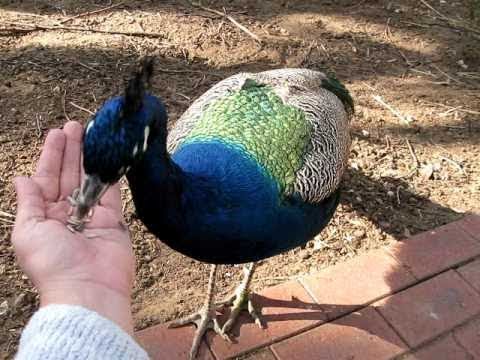What do Peacocks Eat

Peacocks, with their resplendent plumage and majestic presence, have captivated human fascination for centuries. Beyond their stunning appearance, there lies a curiosity about their dietary habits and what sustenance fuels these magnificent creatures. While often associated with regal elegance, peacocks are not overly selective when it comes to their diet. Let’s delve into the intriguing world of peacock nutrition and explore what these birds consume in the wild and in captivity.
Natural Diet:
In their natural habitat, peacocks are omnivorous birds, meaning they consume both plant matter and small creatures. Their diet largely depends on the season and availability of food sources in their environment. During the warmer months, peacocks predominantly feed on insects, grubs, small reptiles, and amphibians. They are skilled foragers, using their keen eyesight and agile movements to capture prey. Insects such as ants, beetles, grasshoppers, and caterpillars are among their favorite delicacies.
Apart from animal protein, peacocks also consume various plant materials. They feed on seeds, grains, fruits, and tender shoots found in their surroundings. Berries, fallen fruits, and grains scattered on the ground are readily consumed by these birds. Additionally, they exhibit a penchant for fresh foliage, including leaves, flowers, and buds. This diverse diet ensures they receive essential nutrients vital for their growth and survival.
Adaptability in Captivity:
In captivity, the diet of peacocks is often supplemented to ensure their nutritional needs are met adequately. Peafowl kept in zoos, aviaries, or as domestic pets require a balanced diet to thrive. Commercially available bird feed formulated specifically for game birds or poultry can serve as the primary source of nutrition. These feeds typically contain a blend of grains, seeds, and protein sources, mimicking the diversity of their natural diet.
In addition to formulated feeds, captive peacocks benefit from the inclusion of fresh fruits and vegetables in their diet. Offerings such as leafy greens, carrots, cucumbers, and melons provide essential vitamins and minerals. Peacocks also relish treats like mealworms, crickets, and earthworms, which serve as a source of animal protein, enriching their diet and providing mental stimulation.
Supplementary Considerations:
While peafowl are generally resilient birds, certain dietary considerations should be observed to maintain their health and vitality. It’s essential to provide access to clean, fresh water at all times, as proper hydration is crucial for their well-being. Additionally, offering grit or small stones aids in the digestion process by assisting in the breakdown of food particles in the bird’s gizzard.
Furthermore, dietary requirements may vary depending on factors such as age, reproductive status, and environmental conditions. During the breeding season, for example, breeding pairs may benefit from additional protein-rich foods to support egg production and chick rearing.
Conclusion:
The culinary preferences of peacocks reflect their adaptable nature and opportunistic feeding behavior. Whether foraging in the wild or dining in captivity, these birds exhibit a diverse palate, consuming a combination of plant matter and small creatures to meet their nutritional needs. Understanding and providing for the dietary requirements of peacocks not only ensures their physical health but also contributes to their overall well-being and vitality, allowing these magnificent birds to continue captivating admirers with their beauty and grace.
